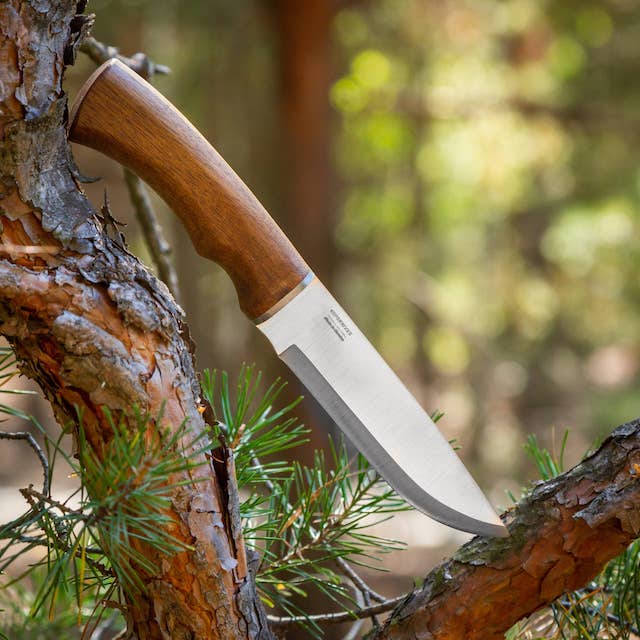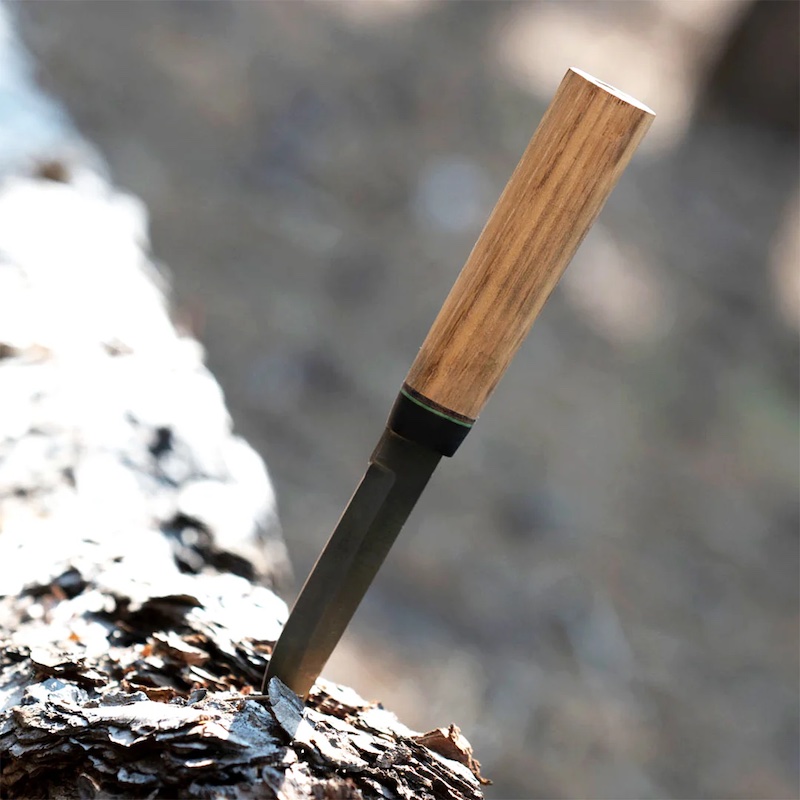Introduction
A camping knife is an essential tool for any outdoor enthusiast. Its versatility makes it useful for a wide range of tasks, from cutting through rope and branches to preparing food and even for protection in a worst-case scenario. Whether you are on a backpacking trip, a hunting expedition, or simply enjoying a weekend of camping with friends and family, a reliable camping knife is an indispensable piece of gear.
When it comes to camping, having the right tools is essential for a successful and enjoyable experience. One of the most important tools you can have in your camping arsenal is a high-quality camping knife. Whether you need to chop firewood, prepare food, or handle any other tasks that may arise during your outdoor adventures, a camping knife is a versatile and indispensable tool.
Part 1: Understanding the Different Types of Camping Knives
Level 1: Fixed Blade Knives
Fixed blade knives are known for their durability and reliability. These knives have a solid, non-folding blade that is securely attached to the handle. They are ideal for heavy-duty tasks such as chopping wood, hunting, and other outdoor activities that require a strong and sturdy blade.
Level 2: Folding Knives
Folding knives, also known as pocket knives, are compact and convenient for camping trips. They have a hinged blade that can be folded into the handle, making them easy to carry and store. While not as robust as fixed blade knives, folding knives are versatile and can handle a wide range of camping tasks.
Part 2: Choosing the Right Blade Material
Level 1: Stainless Steel
Stainless steel is a popular choice for camping knives due to its corrosion resistance and durability. It is easy to maintain and holds its edge well, making it a reliable option for outdoor use.
Level 2: Carbon Steel
Carbon steel blades are known for their exceptional strength and edge retention. While they are prone to corrosion and require more maintenance than stainless steel, many campers prefer the superior performance of carbon steel knives.
Part 3: Considering Blade Length and Design
Level 1: Blade Length
When choosing a camping knife, consider the length of the blade. A longer blade is ideal for heavy-duty tasks such as chopping and batoning, while a shorter blade is more versatile for everyday camping tasks.
Level 2: Blade Design
The design of the blade also plays a crucial role in its functionality. A drop point, clip point, or tanto blade design can offer different advantages for various camping activities, so choose a design that suits your specific needs.
Part 4: Evaluating Handle Materials and Ergonomics
Level 1: Handle Materials
The handle material of a camping knife can significantly affect its performance and comfort. Common materials include wood, synthetic composites, and rubber, each with its advantages and disadvantages in terms of grip, durability, and weight.
Level 2: Ergonomics
A well-designed handle should provide a comfortable and secure grip to minimize hand fatigue during extended use. Look for a camping knife with an ergonomic handle that feels natural in your hand and provides good control for precise cutting tasks.
Part 5: Additional Features and Considerations
Level 1: Blade Coatings and Finishes
Some camping knives come with blade coatings or finishes that offer benefits such as corrosion resistance, reduced glare, or improved slicing performance. Consider these additional features when choosing a camping knife that suits your needs and preferences.
Level 2: Safety and Legal Considerations
Before purchasing a camping knife, be sure to research and understand local laws and regulations regarding knife carry and usage. Additionally, always prioritize safety by practicing proper knife handling and maintenance to prevent accidents during your outdoor adventures.
Part 6: Safety Features
Level 1: Locking Mechanism
One important safety feature to consider in a camping knife is the locking mechanism. A reliable locking mechanism is crucial for keeping the blade securely in place when in use, preventing it from accidentally folding in on the user’s hand. Common locking mechanisms include liner locks, frame locks, and lockback mechanisms, each with its own advantages and drawbacks. When choosing a camping knife, it’s essential to ensure that the locking mechanism is robust and easy to operate.
Level 2: Ergonomic Handle
In addition to the blade, the handle of a camping knife plays a vital role in ensuring safety during use. An ergonomic handle design allows for a comfortable and secure grip, reducing the risk of slipping or losing control of the knife while performing tasks such as cutting or chopping. Look for handles that are constructed from durable materials such as G-10, micarta, or rubber, and feature ergonomic contours that fit the natural shape of the hand for a more secure and comfortable grip.
Part 7: Maintenance and Care
Level 1: Corrosion Resistance
Proper maintenance and care are essential for keeping a camping knife in top condition, particularly when exposed to the elements during outdoor adventures. One important consideration is corrosion resistance. Look for camping knives made from materials such as stainless steel, titanium, or coated carbon steel, which offer increased resistance to rust and corrosion. Additionally, regular cleaning and oiling of the blade can help prevent corrosion and ensure the longevity of the knife.
Level 2: Sharpening
Another crucial aspect of maintaining a camping knife is keeping the blade sharp. Dull blades can be inefficient and dangerous to use, requiring more force and increasing the risk of slipping. It’s important to invest in a quality sharpening system or sharpening stone to keep the blade consistently sharp. Regular honing and sharpening of the blade will ensure that the knife remains effective for various tasks while camping.
Part 8: Multifunctionality
Level 1: Additional Tools
Many camping knives are designed to offer more than just a blade, incorporating additional tools and features to enhance their functionality. Some camping knives may include built-in fire starters, emergency whistles, bottle openers, screwdrivers, or even small saws, making them versatile tools for outdoor activities. Consider the specific needs of your camping adventures and select a knife that offers the right combination of additional tools to suit your requirements.
Level 2: Compatibility
When considering the multifunctionality of a camping knife, it’s important to ensure that the additional tools are compatible with the primary function of the knife. For example, a camping knife with a built-in fire starter should be designed in a way that allows for easy and safe use without compromising the effectiveness of the blade. Look for camping knives with well-integrated additional tools that complement the primary utility of the knife without sacrificing its core functionality.
Conclusion
Proper care and maintenance of a camping knife is essential to ensure its longevity and performance. Regular sharpening and cleaning, as well as oiling the blade to prevent rust, are key practices to keep the knife in top condition. Additionally, storing the knife in a sheath or protective cover when not in use will help to prevent damage to the blade and ensure safety when carrying the knife.
A camping knife is an essential tool for any outdoor enthusiast, and choosing the right one can make a significant difference in your camping experience. By understanding the different types of camping knives, evaluating blade materials, considering blade length and design, prioritizing handle ergonomics, and taking additional features and considerations into account, you can select a camping knife that meets your needs and enhances your outdoor adventures. With the right camping knife by your side, you can confidently tackle any camping task and fully enjoy the beauty of nature.



